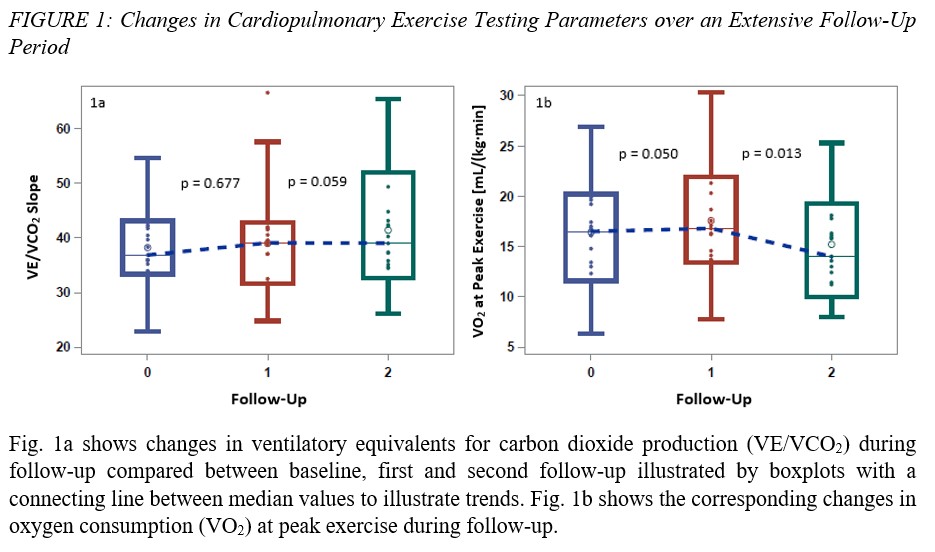Abstract
CPET allows for monitoring of functional capacity in patients with ATTR-CM. We evaluated PP in patients with ATTR-CM over an extensive follow-up period. Patients underwent CPET at baseline, first follow-up (1.FUP) (at 8±4 months after baseline) and second follow-up (2.FUP) (at 24±19 months after 1.FUP). Baseline data was compared with 1.FUP and compared between 1.FUP and 2.FUP. We analysed 27 patients (92.6% male) aged 77±9 years. CPET assessment showed increased PP at 1.FUP compared to baseline (95±33 watt versus 86±29 watt, p <0.001) and decreased PP at 2.FUP compared to 1.FUP (88±39 watt versus 95±33 watt, p <0.05). Peak oxygen consumption (VO2) increased at 1.FUP compared to baseline (17.57±5.55 versus 16.42±5.38 mL/kg·min, p <0.05) and decreased at 2.FUP compared to 1.FUP (15.19±5.21 versus 17.57±5.55 mL/kg·min, p <0.05). Carbon dioxide production (VCO2) at peak exercise increased at 1.FUP compared to baseline (1509±516 versus 1369±445 mL/min, p <0.05) and decreased at 2.FUP compared to 1.FUP (1296±528 versus 1509±516 mL/min p <0.05). Minute ventilation at peak exercise (VE) increased at 1.FUP compared to baseline (66±16 versus 58±15, p <0.05). Our novel findings, show that CPET is an accurate tool to evaluate long-term changes in functional capacity in ATTR-CM patients.
